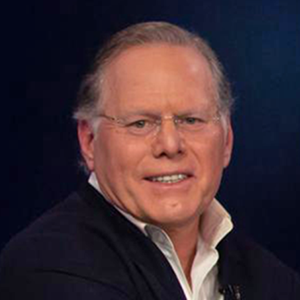CT Stories
Media and telecom do not mix
As Verizon threw in the towel on its digital media strategy with the cut-price sale of Verizon Media, AT&T too announced its plans to combine its WarnerMedia assets with Discovery Inc. to form a new, stand-alone entity.
Media companies are aggregating content via mergers and acquisitions to create more formidable competitors in fast-growing direct-to-consumer streaming services, while telecommunication companies are investing heavily to strengthen wireless technology and high-speed internet access. However, the convergence of telecom and media assets due to changing media consumption patterns and alternative distribution platforms is no longer a strategic focus for some telecom companies and those that acquired media assets are divesting them.
A grand experiment by US wireless carriers to make and distribute video content appears to be coming to an end. Just 3 years after it fought the Justice Department to complete its USD 85 billion purchase of media giant Time Warner, AT&T is selling off its entertainment business to drill back down on the basics and specifically on 5G.
AT&T recently unveiled the change in strategy by announcing a USD 43 billion deal to sell its WarnerMedia assets to Discovery. The deal marks a drastic change in direction for AT&T, which poured its resources into convincing the government to let it buy Time Warner with the goal of creating a behemoth that owned both the content and the pipes that connect to consumers.
 David Zaslav
David Zaslav
CEO
Discovery Inc.
“During my many conversations with John, we always come back to the same simple and powerful strategic principle: these assets are better and more valuable together. It is super exciting to combine such historic brands, world class journalism and iconic franchises. With a library of cherished IP, dynamite management teams and global expertise, we believe everyone wins…consumers with more diverse choices, talent and storytellers with more resources, and shareholders with a globally scaled growth company committed to a strong balance sheet that is better positioned to compete with the world’s largest streamers. We will together build a new chapter.”
 John Stankey
John Stankey
CEO
AT&T Inc.
“This agreement unites two entertainment leaders with complementary content strengths and positions the new company to be one of the leading global direct-to-consumer streaming platforms. For AT&T shareholders, this is an opportunity to unlock value and be one of the best capitalized broadband companies, focused on investing in 5G and fiber to meet substantial, long-term demand for connectivity. They will retain their stake in our leading communications company that comes with an attractive dividend plus get a stake in the new company that can build one of the top streaming platforms in the world.”
That turned out to be a strategic error, saddling the company with debt at a time when it also needed to inject capital both into its HBO Max streaming service and into its 5G network to keep up with T-Mobile and Verizon Wireless. With competing obligations, something had to give. So, AT&T executives are going back to what they know well.
AT&T and Discovery Communications have reached a definitive agreement to combine AT&T’s WarnerMedia with Discovery, creating what they called a TV and streaming giant. The new company, Warner Bros. Discovery would aim to take on the leaders in the new streaming TV market, now led by Netflix and The Walt Disney Co.
AT&T, which bought Time Warner 3 years ago for USD 85 billion, will receive USD 43 billion worth of cash and debt. Its shareholders will own 71 percent of the new company. The deal would unwind AT&T’s strategy of combining its mobile phone and broadband assets with a content company.
This is the second spin-off the phone giant has made in about 3 months. In March, it spun off DirecTV in a separate, publicly traded unit that would include private equity giant TPG, for about USD 16 billion, or less than half the USD 49 billion (USD 66 billion including debt) it paid for the asset in 2015. In December 2020, the telco hived off its anime video unit, Crunchyroll to a unit of Sony Corp. for USD 1.2 billion. The company has parted with its Puerto Rico phone operations, a stake in Hulu, a central European media group and almost all its offices at New York’s Hudson Yards.
Discovery’s CEO David Zaslav will be the head of the combined company, which will own streaming assets in HBO Max and Discovery Plus and a collection of cable networks, including the former Turner networks’ news channel, CNN, general entertainment and sports channels TBS and TNT, and kids’ programmer Cartoon Network as well Discovery’s unscripted channels HGTV, Food Network, Discovery, TLC, and OWN.
The combined company is projected to have 2023 revenue of USD 52 billion and adjusted EBITDA of USD 14 billion. The combination of the two companies is expected to result in USD 3 billion cost synergies annually. They spend a total of USD 20 billion on content, more than Netflix, which plans to spend USD 17 billion this year.
Freeing up money for 5G investments. AT&T has owned the Time Warner assets for only 2.5 years. But the assets have been viewed as a drag on the larger company. AT&T has unloaded its WarnerMedia unit to focus on its mobile and fixed broadband businesses.
The goals with the new AT&T are simple and straightforward. The plan is to continue the momentum in its mobility business by stepping up the investment in the wireless network. The assets acquired are being deployed in the C-band auction, reaching 200 million PoP with that spectrum by the end of 2023. AT&T was the second largest spender at the C-band auction, paying about USD 23.4 billion to win 1621 licenses in the 3.7-3.98 GHz band.
AT&T intends to more than double its current fiber footprint by the end of 2025, reaching 30 million customer locations. It plans to increase its CapEx for 5G and fiber broadband, boosting its annual CapEx to around USD 24 billion once the Discovery/WarnerMedia deal closes in 2022. For 2021, AT&T has slated its total CapEx spend at around USD 21 billion.
The strategy shift comes as both the media and wireless landscapes have gotten more competitive. Over the past few years, viewers have been shifting away from traditional pay TV services to streaming platforms, like Amazon and Netflix. The competition for viewership has gotten intense, especially as new entrants like Disney Plus have come on the scene.
On the wireless side, T-Mobile’s acquisition of Sprint last year has put intense competitive pressure on AT&T. The combined T-Mobile and Sprint has overtaken AT&T as the second-largest wireless company in the US by subscribers behind Verizon. Now all three wireless giants – Verizon, T-Mobile, and AT&T – are racing to deploy 5G wireless service to a broader swath of Americans.

AT&T has lagged behind its wireless rivals in deploying valuable mid-band spectrum, which the wireless industry views as a key technology for offering faster 5G performance. Mid-band spectrum, like spectrum in the C-band offers a good mix of capability that complements low-band spectrum, which features greater reach, and ultra-high-band spectrum, which transmits over very short distances at super high speeds.
Wall Street analyst, Jonathan Chaplin of New Street Research has been warning that AT&T was stretched too thin to invest both in wireless for its 5G deployment and in the HBO Max streaming service. In a research note published after the company’s first-quarter earnings last month, Chaplin pointed out that AT&T was lagging rivals in its investment in 5G and likely sacrificing investment in wireless to prop up HBO Max. “AT&T is neglecting the cash cow (they are literally treating wireless like a cow, and not the longhorn variety), while they focus investment on sexier businesses,” Chaplin wrote at the time.
Seeing a big telco fail to grasp how to manage and invest in a content company is not new. Verizon Communications agreed to sell Yahoo and its other media assets to Apollo Global Management for USD 5 billion on May 3, 2021 so the telco could focus on its core network business and 5G rollout. The sale is another dramatic U-turn for the wireless company that between 2015 and 2017 spent nearly USD 9 billion to acquire Yahoo and AOL to anchor an online media division. Buying high and selling low is not a good business strategy, but Verizon bit the bullet as it needs to turn its financial and operational focus on the parts of its business that are key to its role as a provider of connectivity and which require a great deal of capital investment.
Clearly, Apollo thinks it can apply the transformative magic that Verizon has been unable to muster since it brought AOL in 2015 for USD 4.4 billion and then Yahoo in 2017 for USD 4.48 billion.
Verizon seems to think so too, as it has retained a 10 percent stake in the business, which is to be called Yahoo. “With Apollo’s sector expertise and strategic insight, Yahoo will be well positioned to capitalize on market opportunities, media and transaction experience and continue to grow our full stack digital advertising platform. This transition will help to accelerate our growth for the long- term success of the company,” stated Verizon Media CEO Guru Gowrappan, who needs to remain positive as he will continue to lead the business when it changes hands in the second half of this year.
Other operators face similar decisions, UK incumbent BT, which is now seeking external investments in its TV operation, is just one example. BT put its BT Sport business under strategic review and interested buyers or partners reportedly include DAZN, Amazon Prime, ITV and Disney. Not only is the business of acquiring live sport rights expensive and out of BT’s core area of business but the original idea of using a live sport offer to compete with Sky for subscribers largely disappeared once the UK regulator decreed that English Premier League football should be accessible to viewers without having to pay for two separate services.
What the merger means for the media industry. It is almost taken for granted that telcos are not good managers of media assets. Certainly, there seems to have been a big mis-step made by AT&T in regards to who it hired to manage the transition of WarnerMedia from its traditional way of doing business where strict P&L silos separated the film, pay TV and free TV businesses, into the world of streaming services.
A tech-minded, media outsider, WarnerMedia’s outgoing CEO Jason Kilar was brought in by AT&T CEO John Stankey only 10 months ago to shake things up. There is a certain amount of schadenfreude in the fact that the man who took a hatchet to the traditional Warner Media structure including cutting many long time, senior executives, is now negotiating his own exit from the company.
Perhaps Kilar’s audacious decision last year to throw out the century-old theatrical distribution model was part of the whiplash that is seeing him head for the door. In December last year, Kilar announced that the entire 2021 Warner Bros film slate of 17 films would be released simultaneously in cinemas and on the HBOMax streaming service.
While Disney had decided on a similar simultaneous release for its fantasy action-drama Mulan, the difference was that Disney+ subscribers had to pay an extra USD 30 for the privilege. Kilar decided that no surcharge would be applicable for Warner Bros films, starting with Wonder Woman 1984 which became available to HBOMax subscribers for no extra charge on Christmas day 2020. At the time, one analyst said the decision would lose Warner Bros as much as USD 1.2 billion in global box office revenue.
As the move to DTC services continues, the stakes could not be higher for legacy media companies and advertisers, too. The pivot to streaming video services by audiences is taking its toll on linear channel ratings and the move by broadcasters to their own VoD services is a work in progress.
The pressure is mounting as the big legacy media players continue to adding free, ad-supported VoD (AVoD) services to their streaming offers. The latest is HBOMax, which announced a USD 10-a-month AVoD tier on May 19, only days after the WarnerMedia/Discovery announcement. The new ad-tier will include much of WarnerMedia’s content library but significantly users will not have access to the Warner Bros’ same-day premiere films.
Netflix and Disney+, with 208 million and 104 million subscribers respectively, are the kings of the SVoD streamers. The rest of the pack, including AT&T’s HBOMax at 44 million subscribers, NBCUniversal’s Peacock service at 42 million subscribers, and Discovery+ at 15 million are all playing catch up. The combination of HBOMax/Discovery+ puts the newco at 59 million subscribers and if Zaslav has his way the combination of programming and brand assets will spur faster growth.
But the rest of the industry is not standing still. AT&T’s CEO John Stankey told reporters and analysts when the deal was announced that he expects there will be more consolidation to come. “We… (wanted to) initiate that rather than have to follow it,” he said.
One lesson phone companies seemingly have to learn year after year after year is that the TV business is not the phone business. And a climate where Disney Plus has more than 100 million subscribers but still took it on the chin for not growing fast enough, just shows that streaming, as it is currently modeled, requires an unprecedented level of scale and engagement.
The US telcos’ media adventures look to be coming to an end, an end of an era for so-called vertical integration – owning media and the means to distribute it.
 Jesse Cohn
Jesse Cohn
Managing Partner
Elliott Management
“It has been a transformational year at AT&T. The telco has now executed on its promise to streamline operations and refocus on its core businesses.”
 Craig Moffett
Craig Moffett
Analyst
MoffettNathanson LLC.
“AT&T’s balance sheet was wrecked by overpaying first for DirecTV, and then for Time Warner, over a span of just three years. The lesson of AT&T goes beyond the company overpaying, it suffered a strategic failure as well. They were never able to articulate a clear logic for why they wanted to invest in a legacy media business that they themselves argued was about to enter a permanent secular decline.”
 Rich Karpinski
Rich Karpinski
Analyst
451 Research
“It’s a pretty big change of direction on a pretty quick turnaround timeframe. That said, I think it makes sense. Verizon’s similar announcement earlier this month that it would sell off the AOL Inc. and Yahoo! brands under its Verizon Media Business as further indication of the challenges telcos face in achieving success in both the wireless and content realms. To that end, AT&T’s decision is not surprising directionally, but maybe timing-wise.”
 Karan Taurani
Karan Taurani
Vice President
Elara Capital
“On the streaming side, WarnerMedia has no presence in India, whereas Discovery+ is a small OTT offering in terms of genre, reach, and content. The only impact will be if Discovery+ and HBO Max come together in India and bundle their offering. Otherwise, Discovery is too small to impact the overall OTT space. On the linear business, it is unlikely to have an impact because they hardly have a major presence in India. The genres that these two networks operate in are niche in the Indian market.”















You must be logged in to post a comment Login